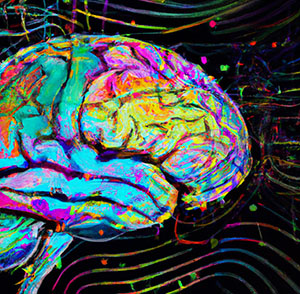Can Synesthesia be Learned or Induced?
While some people are born with synesthesia, it is also possible for people to learn or induce the condition through certain techniques or practices. However, it is important to note that inducing synesthesia is not the same as experiencing the condition naturally, and the experience may not be as vivid or consistent.
One way that synesthesia can be induced is through the use of certain drugs or substances. For example, hallucinogenic drugs like LSD and psilocybin have been known to induce synesthetic experiences in some people. While this can be a fascinating and transformative experience for some, it is not recommended as a means of inducing synesthesia due to the potential risks and side effects associated with drug use.
Another way that synesthesia can be induced is through meditation and mindfulness practices. Some people have reported experiencing synesthetic perceptions during meditation, particularly during deep states of concentration or awareness. This may be due to the heightened sensory awareness and perception that can occur during meditation.
In addition to meditation, some people have reported inducing synesthesia through other sensory deprivation or enhancement techniques. For example, some people have reported experiencing synesthetic perceptions while listening to binaural beats or while using sensory deprivation tanks.
Implications of Inducing Synesthesia
The ability to induce or learn synesthesia raises interesting questions about the nature of perception and consciousness. Some researchers have suggested that the ability to induce synesthesia may be evidence of the brain's plasticity and its ability to adapt and reorganize in response to new stimuli.

However, there are also concerns about the potential risks and ethical implications of inducing synesthesia. For example, inducing synesthesia through drug use can be dangerous and can have unpredictable effects on the brain and body. Additionally, there may be concerns about the authenticity and validity of induced synesthetic experiences, particularly if they are not consistent or long-lasting.
Despite these concerns, the ability to induce synesthesia may have potential applications in fields such as art and design, where synesthetic perceptions can be used to create more immersive and engaging experiences. For example, some artists have used sound and light to create synesthetic installations that are designed to evoke specific emotional responses in viewers.
Conclusion
Synesthesia is a fascinating neurological condition that affects the way people perceive the world around them. While some people are born with synesthesia, others may be able to induce or learn the condition through certain techniques or practices.
While inducing synesthesia can be a transformative and fascinating experience, it is important to be aware of the potential risks and ethical concerns associated with this practice. Ultimately, our understanding of synesthesia and its potential applications will continue to evolve as researchers and practitioners explore new ways of inducing and experiencing this unique phenomenon.